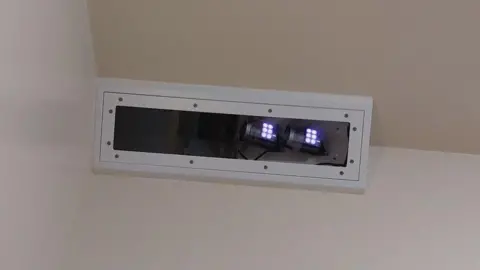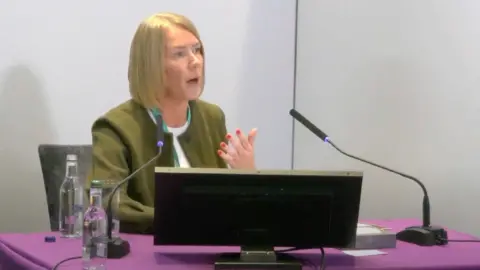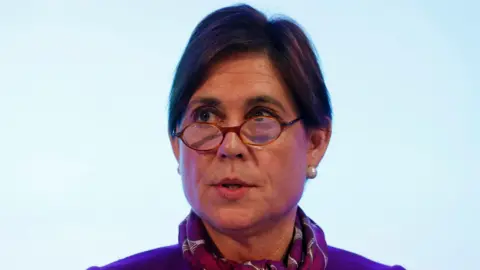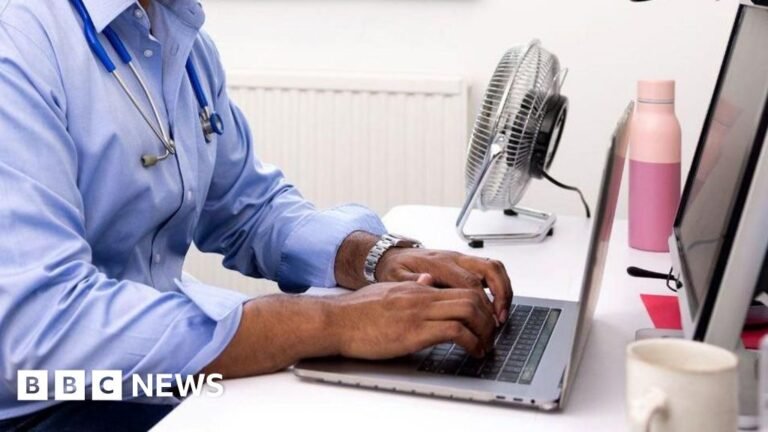Lampard Inquiry: ‘Grave concerns’ about Oxevision monitoring system
Sophie HutchinsonBBC health correspondent and Stuart Woodwardat the Lampard Inquiry BBC Oxevision uses infrared sensors and cameras to monitor patients while they are in their bedrooms The public inquiry into the deaths of at least 2,000 people under the care of mental health services heard “grave concerns” about the use of a digital patient monitoring…
Sophie HutchinsonBBC health correspondent and
Stuart Woodwardat the Lampard Inquiry
 BBC
BBCThe public inquiry into the deaths of at least 2,000 people under the care of mental health services heard “grave concerns” about the use of a digital patient monitoring system.
The technology, called Oxevision, was used by half of England’s mental health trusts and uses infrared sensors and cameras to monitor patients alone in their rooms, sending alerts to staff when it detects signs of distress or abnormal activity.
The Lampard Inquiry was told campaigners were concerned the technology had been overly relied upon by staff, and many patients’ experiences of the technology were “intrusive, undignified, dehumanising and traumatising”.
Oxevsion’s manufacturer said the system played a critical role in preventing harm, but agreed filming a patient 24 hours a day could possibly “constitute a very significant invasion of privacy”.
‘De-humanising’
This week marked the fifth set of hearings overseen by Baroness Lampard as part of England’s first public inquiry into mental health deaths.
The inquiry aimed to examine why at least 2,000 patients died while being cared for under NHS mental health services in Essex between 2000 and 2023.
Essex Partnership University NHS Foundation Trust [EPUT] previously apologised to families at the inquiry.
 Lampard Inquiry / YouTube
Lampard Inquiry / YouTubeCounsel for the Lampard Inquiry, Nicolas Griffin KC, said Oxevision had proved controversial and had featured in a number of recent inquests.
These included patients Michael Nolan and Morgan Rose-Hart, who died in 2022, along with Elise Sebastian, who died in April 2021.
Elise was found unresponsive in her bedroom at the St Aubyn Centre in Colchester.
The 16-year-old was supposed to receive one-to-one care, but an inquest was told the Oxevision alert system, linked with her bedroom, was muted and she was left alone for 28 minutes.
The coroner was told changes had been made to the alert system by EPUT.
 Stuart Woodward/BBC
Stuart Woodward/BBCHow does Oxevision work?
Oxevision is a remote monitoring system, which manufacturers said was used in half of all NHS mental health trusts in England, providing in-patient care.
Infra-red cameras installed in patients’ bedrooms can track their pulse rates by detecting “micro-blushes” of the skin – invisible to the naked eye – as well as their breathing rates due to the rise and fall of a patient’s chest.
A camera can also take images and provide a clean video feed of up to 15 seconds.
Alerts and warnings were meant to be sent to staff on computers and tablets in the case of an emergency.
 Richard Daniel/BBC
Richard Daniel/BBCIn a statement to the inquiry, the campaign group made up of former and current NHS inpatients, Stop Oxevision, said the system had led to serious harm.
Their spokesperson, Hat Porter, described it as a “superficial quick fix for wider systemic issues” and said many patients’ experiences of the technology were “intrusive, undignified, dehumanising and traumatising”.
Their research raised concerns, including significant invasion of privacy, the impact of the technology on patients’ health and recovery, and staffing issues.
Stop Oxevision is due to appear at the Lampard Inquiry on Tuesday in a pre-recorded evidence session.
 Getty Images
Getty ImagesLaura Cozens from LIO – the company formerly called Oxehealth, which created Oxevision – said “the platform may not be suitable for everyone – and we do recognise that”.
Asked by Mr Griffin KC, “Would you agree that filming a patient 24 hours a day constitutes a very significant invasion of privacy?”, Ms Cozens said, “Possibly, yes”.
Ms Cozens added that it was important that the use of the technology was properly communicated to patients, and it had played a critical role in preventing serious incidents, including falls at a dementia ward.
She named 1,774 incidents where staff were supported in responding to situations where patients could otherwise have come to some serious harm, adding that the system helped to free up staff time from paperwork.
A spokesperson for EPUT said that Oxevision was used by the trust “to support our staff to better care for our patients on our wards”.
“This is always carried out in conjunction with clear clinical assessment and the consent of our patients.”
“Their safety, care and recovery is our number one priority,” the spokesperson added.
A representative of the trust is due to appear at the Lampard Inquiry on Tuesday.







